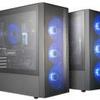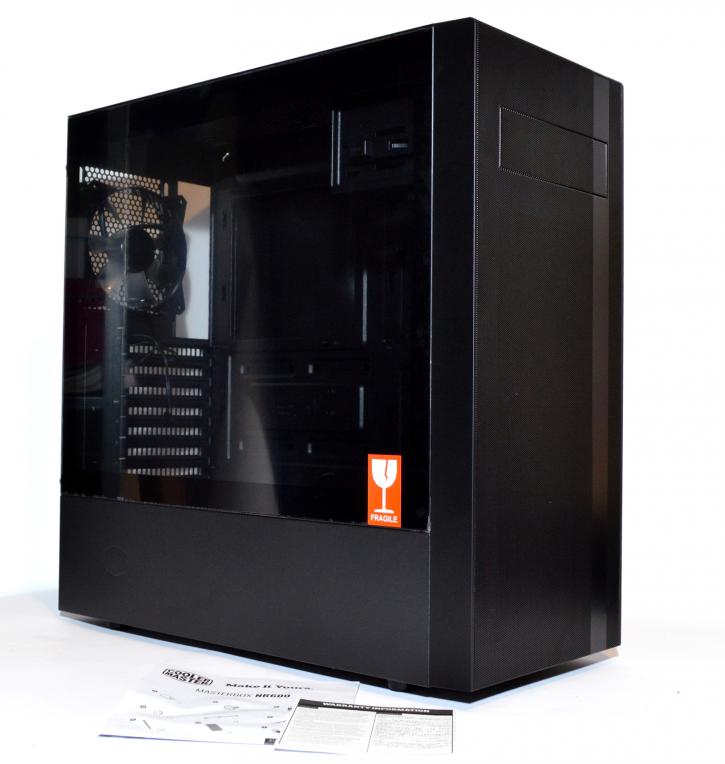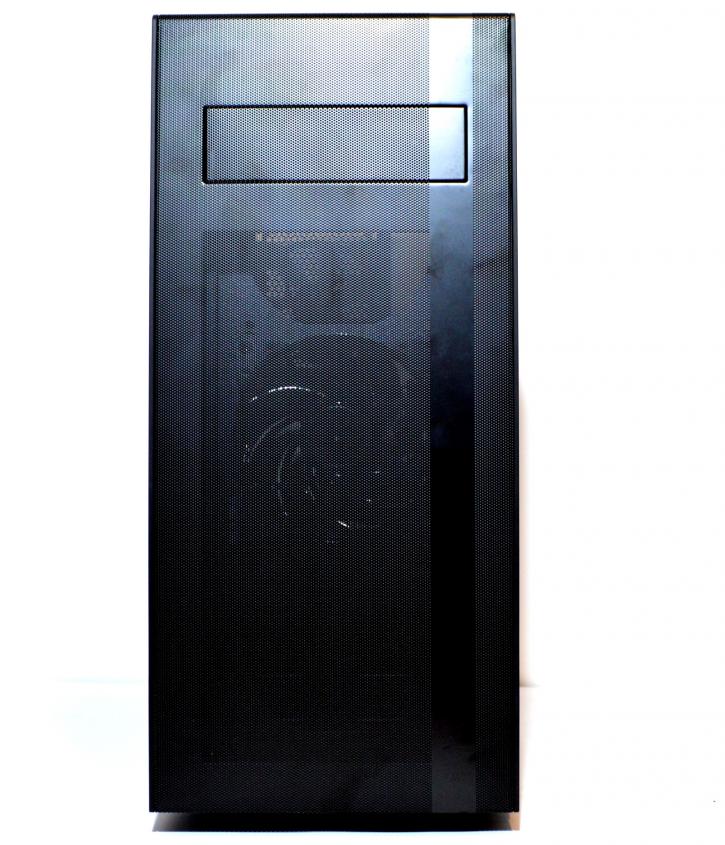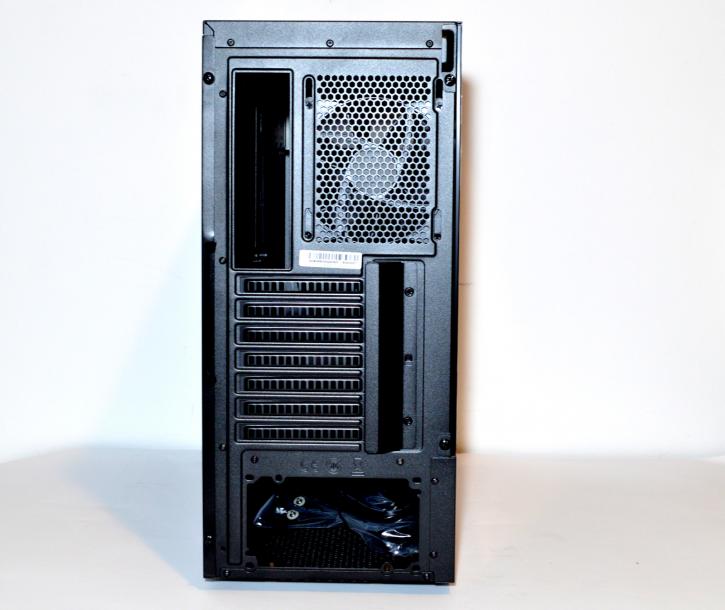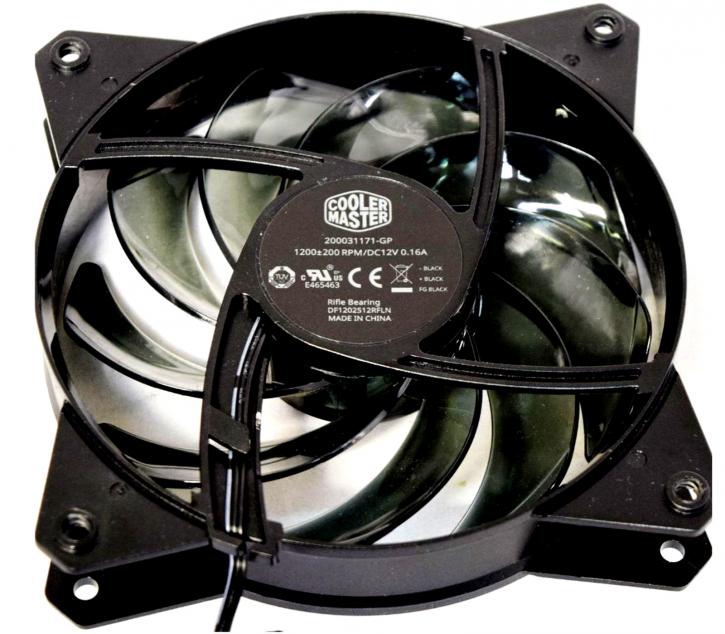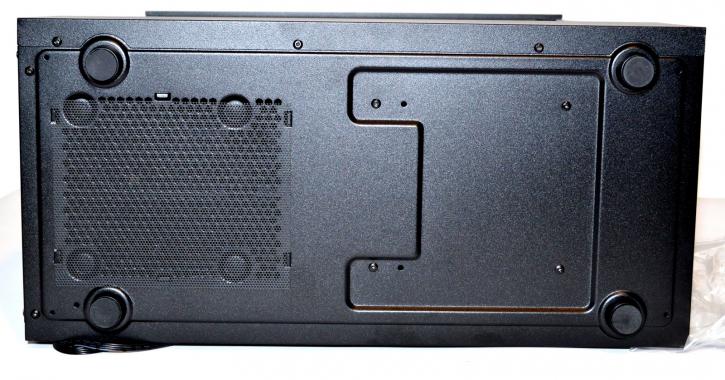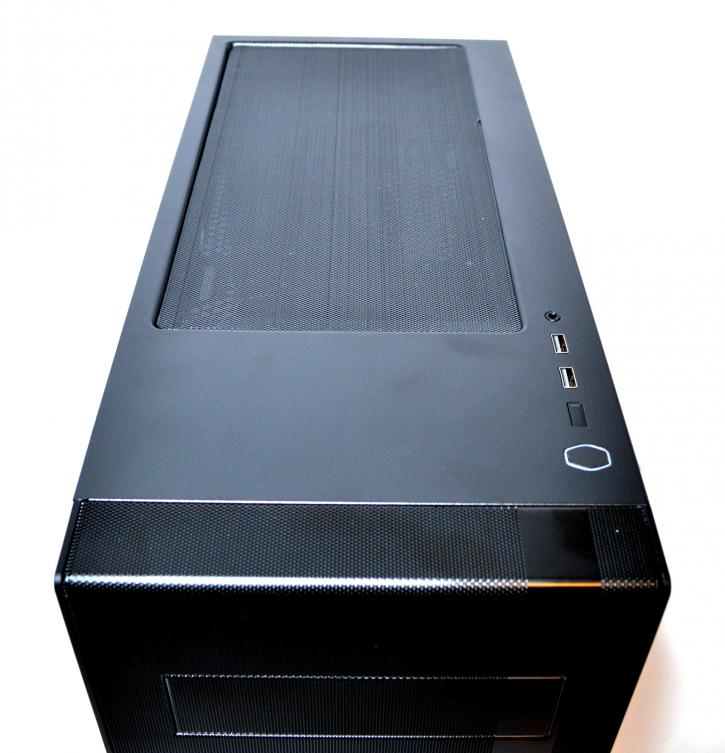Product showcase – exterior
One of the side panels is made of tempered glass, and the other one (on the motherboard tray side) is solid. We’d like to remind you the basic specs here. The body is black, which is the most universal colour.
At 478 (L) x 209 (W) x 473 (H) mm /18.81 in x 8.22 in x 18.62 in, the size is about average for today’s standards. The weight is quite low, as it’s only 6.57 kg. The following motherboard form factors are supported:
- ATX,
- M-ATX,
- Mini-ITX
The left side panel has tempered glass spanning about ¾ of the case’s height.
The chassis is stable (despite the fact that it’s relatively light), and the side panels are secured by thumbscrews.
The front of the case is made almost entirely of mesh, which should help the front fans (up to three of them) to pull in air relatively easily. The mesh also doubles as a dust filter. There is a solid black stripe on the right side of the front part, but there’s no logo there that would indicate the brand. You can see also the place for 5.25” drive.
At the back, you can see 7 expansion slots. The rear (120 mm) fan mount allows some height adjustment. As the screws holding the individual covers are placed outside the case, Cooler Master has implemented an extra cover that you will need to remove during assembly. The PSU bay is located at the bottom, so no surprises here.
The manufacturer includes two 120mm, voltage-controlled fans (200031171-GP) with a rifle bearing. Cooler Master states that they have maximum of 1200 ± 200 rpm.
When you look at the bottom section, you’ll find feet that have been rubberized to prevent unwanted movement of the chassis on the floor. The provided (very basic) dust filter (not a magnetic one) covers the PSU area. It’s easily removable for maintenance, but also quite difficult to put back in correct way on your first try. It also allows the PSU to catch a breath.
You'll find a (relatively) standard I/O panel on the top (like in most cases nowadays). It consists of a set of two USB 3.0 ports, reset and power buttons, and an audio jack (only one, combining the mic and headphone function). The top part has a vent with mesh a filter. Let’s continue to the next page.
